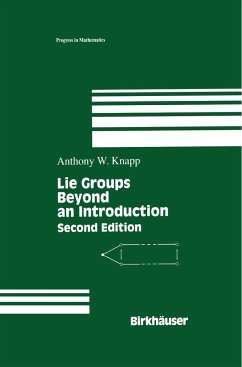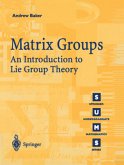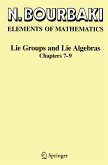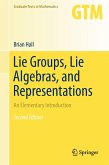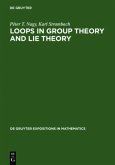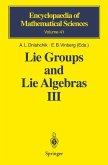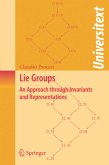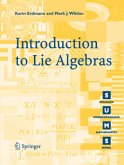Initially the theory of convergence in law of stochastic processes was developed quite independently from the theory of martingales, semimartingales and stochastic integrals. Apart from a few exceptions essentially concerning diffusion processes, it is only recently that the relation between the two theories has been thoroughly studied. The authors of this Grundlehren volume, two of the international leaders in the field, propose a systematic exposition of convergence in law for stochastic processes, from the point of view of semimartingale theory, with emphasis on results that are useful for mathematical theory and mathematical statistics. This leads them to develop in detail some particularly useful parts of the general theory of stochastic processes, such as martingale problems, and absolute continuity or contiguity results. The book contains an introduction to the theory of martingales and semimartingales, random measures stochastic integrales, Skorokhod topology, etc., as well as a large number of results which have never appeared in book form, and some entirely new results. It should be useful to the professional probabilist or mathematical statistician, and of interest also to graduate students.
Lie Groups Beyond an Introduction takes the reader from the end of introductory Lie group theory to the threshold of infinite-dimensional group representations. Merging algebra and analysis throughout, the author uses Lie-theoretic methods to develop a beautiful theory having wide applications in mathematics and physics. A feature of the presentation is that it encourages the reader's comprehension of Lie group theory to evolve from beginner to expert: initial insights make use of actual matrices, while later insights come from such structural features as properties of root systems, or relationships among subgroups, or patterns among different subgroups.
Topics include a description of all simply connected Lie groups in terms of semisimple Lie groups and semidirect products, the Cartan theory of complex semisimple Lie algebras, the Cartan-Weyl theory of the structure and representations of compact Lie groups and representations of complex semisimple Lie algebras, the classification of real semisimple Lie algebras, the structure theory of noncompact reductive Lie groups as it is now used in research, and integration on reductive groups. Many problems, tables, and bibliographical notes complete this comprehensive work, making the text suitable either for self-study or for courses in the second year of graduate study and beyond.
Hinweis: Dieser Artikel kann nur an eine deutsche Lieferadresse ausgeliefert werden.
Lie Groups Beyond an Introduction takes the reader from the end of introductory Lie group theory to the threshold of infinite-dimensional group representations. Merging algebra and analysis throughout, the author uses Lie-theoretic methods to develop a beautiful theory having wide applications in mathematics and physics. A feature of the presentation is that it encourages the reader's comprehension of Lie group theory to evolve from beginner to expert: initial insights make use of actual matrices, while later insights come from such structural features as properties of root systems, or relationships among subgroups, or patterns among different subgroups.
Topics include a description of all simply connected Lie groups in terms of semisimple Lie groups and semidirect products, the Cartan theory of complex semisimple Lie algebras, the Cartan-Weyl theory of the structure and representations of compact Lie groups and representations of complex semisimple Lie algebras, the classification of real semisimple Lie algebras, the structure theory of noncompact reductive Lie groups as it is now used in research, and integration on reductive groups. Many problems, tables, and bibliographical notes complete this comprehensive work, making the text suitable either for self-study or for courses in the second year of graduate study and beyond.
Hinweis: Dieser Artikel kann nur an eine deutsche Lieferadresse ausgeliefert werden.
"Anthony Knapp's Lie Groups Beyond an Introduction, 2nd edition, is a beautiful introduction to this area of mathematics, appropriate for a variety different audiences.... The book is well-organized with concise, focused introductions to each chapter, a very thorough index of notation, and appendices.... In addition, there are hints to the hundreds of exercises, and a section on historical notes.... Knapp's writing is clear, and he avoids excessive notation. The first few chapters comprise a standard introductory course in Lie theory, while numerous second courses could be taught out of the later chapters. Its breadth of coverage and extensive tables also make the book a valuable reference for researchers in representation theory." -MAA Reviews (review of the second edition)
"The first edition of the present book appeared in 1996, and quickly became one of the standard references on the subject.... The present edition has been perfected even further, apart from straightening occasional errors...and making various revisions throughout, by adding a new introduction and two new chapters [IX and X].... Chapter IX contains a treatment of induced representations and branching theorems.... Chapter X is largely about actions of compact Lie groups on polynomial algebras, pointing toward invariant theory and some routes to infinite-dimensional representation theory.... This is an excellent monograph, which, as with the previous edition, can be recommended both as a textbook or for reference to anyone interested in Lie theory." -Mathematical Bohemica (review of the second edition)
"The important feature of the present book is that it starts from the beginning (with only a very modest knowledge assumed) and covers all important topics.... The book is very carefully organized [and] ends with 20 pages of useful historic comments. Such a comprehensive and carefully written treatment of fundamentals ofthe theory will certainly be a basic reference and text book in the future." -Newsletter of the EMS (review of the first edition)
"Each chapter begins with an excellent summary of the content and ends with an exercise section.... This is really an outstanding book, well written and beautifully produced. It is both a graduate text and a monograph, so it can be recommended to graduate students as well as to specialists." -Publicationes Mathematicae (review of the first edition)
"This is a wonderful choice of material. Any graduate student interested in Lie groups, differential geometry, or representation theory will find useful ideas on almost every page. Each chapter is followed by a long collection of problems [that] are interesting and enlightening [and] there are extensive hints at the back of the book. The exposition...is very careful and complete.... Altogether this book is delightful and should serve many different audiences well. It would make a fine text for a second graduate course in Lie theory." -Bulletin of the AMS (review of the first edition)
"This is a fundamental book and none, beginner or expert, could afford to ignore it. Some results are really difficult to be found in other monographs, while others are for the first time included in a book." -Mathematica (review of the first edition)
"The book is written in a very clear style, with detailed treatment of many relevant examples. . . . The book is eminently suitable as a text from which to learn Lie theory." -Mathematical Reviews (review of the first edition)
"The important feature of the present book is that it starts from the beginning (with only a very modest knowledge assumed) and covers all important topics... The book is very carefully organized [and] ends with 20 pages of useful historic comments. Such a comprehensive and carefully written treatment of fundamentals of the theory will certainly be a basic reference and textbook in the future."
-Newsletter of the EMS (review of the first edition)
"It is a pleasure to read this book. It should serve well different audiences. It perfectly suits as a text book to learn Lie theory, including Lie groups, representation theory, and structure theory of Lie algebras. The absense of misprints and errors as well as the long collection of problems including hints at the back of the book make it suitable for self-study. . . At the end there are a lot of enlightening historical remarks, references, and additional results which can serve as a guide for further reading. The book has two good indices. Specialists will be able to use it as a reference for formulation and proofs of the basic results but also for details concerning examples of semisimple groups."
---ZAA
"The first edition of the present book appeared in 1996, and quickly became one of the standard references on the subject.... The present edition has been perfected even further, apart from straightening occasional errors...and making various revisions throughout, by adding a new introduction and two new chapters [IX and X].... Chapter IX contains a treatment of induced representations and branching theorems.... Chapter X is largely about actions of compact Lie groups on polynomial algebras, pointing toward invariant theory and some routes to infinite-dimensional representation theory.... This is an excellent monograph, which, as with the previous edition, can be recommended both as a textbook or for reference to anyone interested in Lie theory." -Mathematical Bohemica (review of the second edition)
"The important feature of the present book is that it starts from the beginning (with only a very modest knowledge assumed) and covers all important topics.... The book is very carefully organized [and] ends with 20 pages of useful historic comments. Such a comprehensive and carefully written treatment of fundamentals ofthe theory will certainly be a basic reference and text book in the future." -Newsletter of the EMS (review of the first edition)
"Each chapter begins with an excellent summary of the content and ends with an exercise section.... This is really an outstanding book, well written and beautifully produced. It is both a graduate text and a monograph, so it can be recommended to graduate students as well as to specialists." -Publicationes Mathematicae (review of the first edition)
"This is a wonderful choice of material. Any graduate student interested in Lie groups, differential geometry, or representation theory will find useful ideas on almost every page. Each chapter is followed by a long collection of problems [that] are interesting and enlightening [and] there are extensive hints at the back of the book. The exposition...is very careful and complete.... Altogether this book is delightful and should serve many different audiences well. It would make a fine text for a second graduate course in Lie theory." -Bulletin of the AMS (review of the first edition)
"This is a fundamental book and none, beginner or expert, could afford to ignore it. Some results are really difficult to be found in other monographs, while others are for the first time included in a book." -Mathematica (review of the first edition)
"The book is written in a very clear style, with detailed treatment of many relevant examples. . . . The book is eminently suitable as a text from which to learn Lie theory." -Mathematical Reviews (review of the first edition)
"The important feature of the present book is that it starts from the beginning (with only a very modest knowledge assumed) and covers all important topics... The book is very carefully organized [and] ends with 20 pages of useful historic comments. Such a comprehensive and carefully written treatment of fundamentals of the theory will certainly be a basic reference and textbook in the future."
-Newsletter of the EMS (review of the first edition)
"It is a pleasure to read this book. It should serve well different audiences. It perfectly suits as a text book to learn Lie theory, including Lie groups, representation theory, and structure theory of Lie algebras. The absense of misprints and errors as well as the long collection of problems including hints at the back of the book make it suitable for self-study. . . At the end there are a lot of enlightening historical remarks, references, and additional results which can serve as a guide for further reading. The book has two good indices. Specialists will be able to use it as a reference for formulation and proofs of the basic results but also for details concerning examples of semisimple groups."
---ZAA

